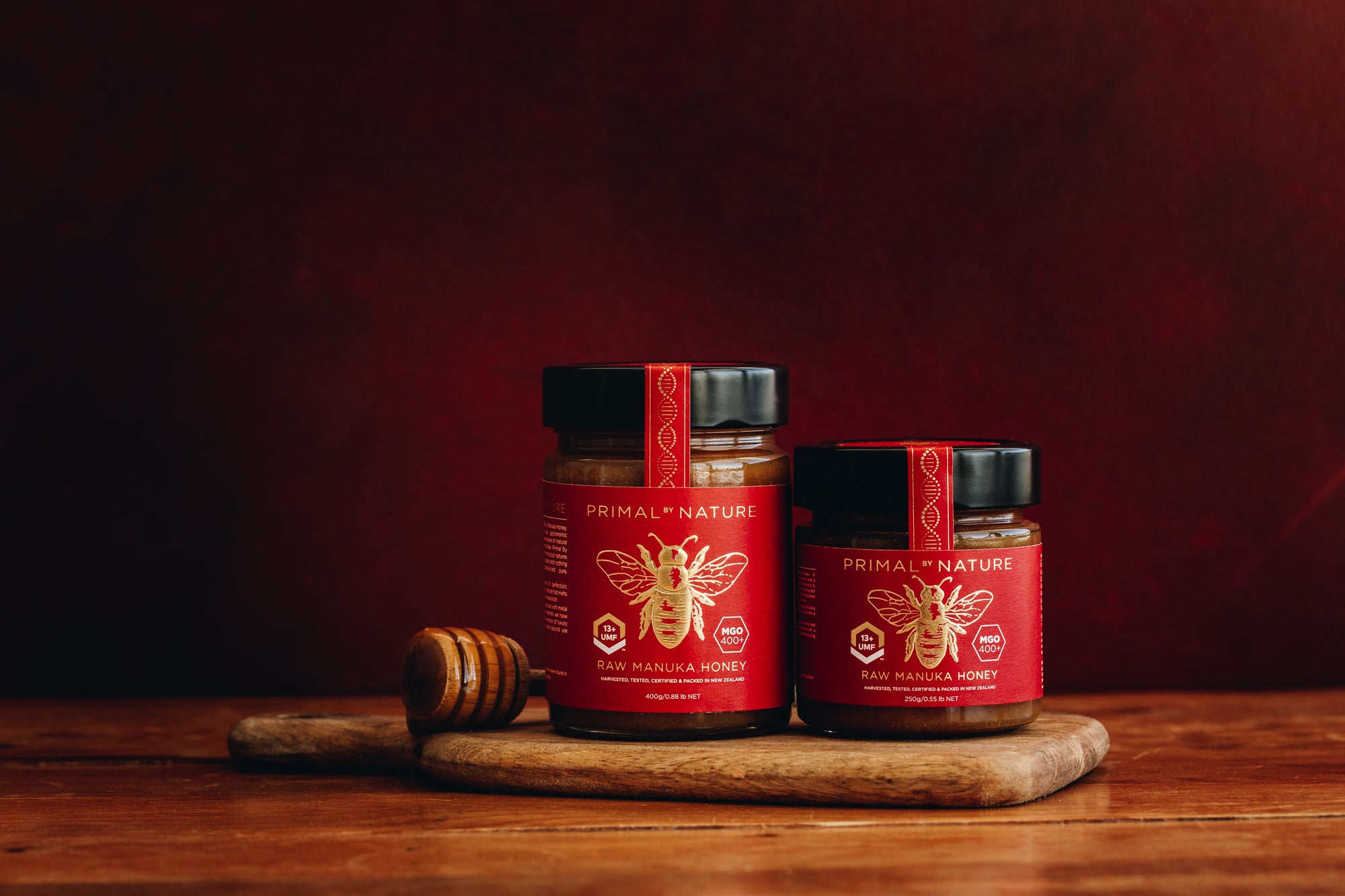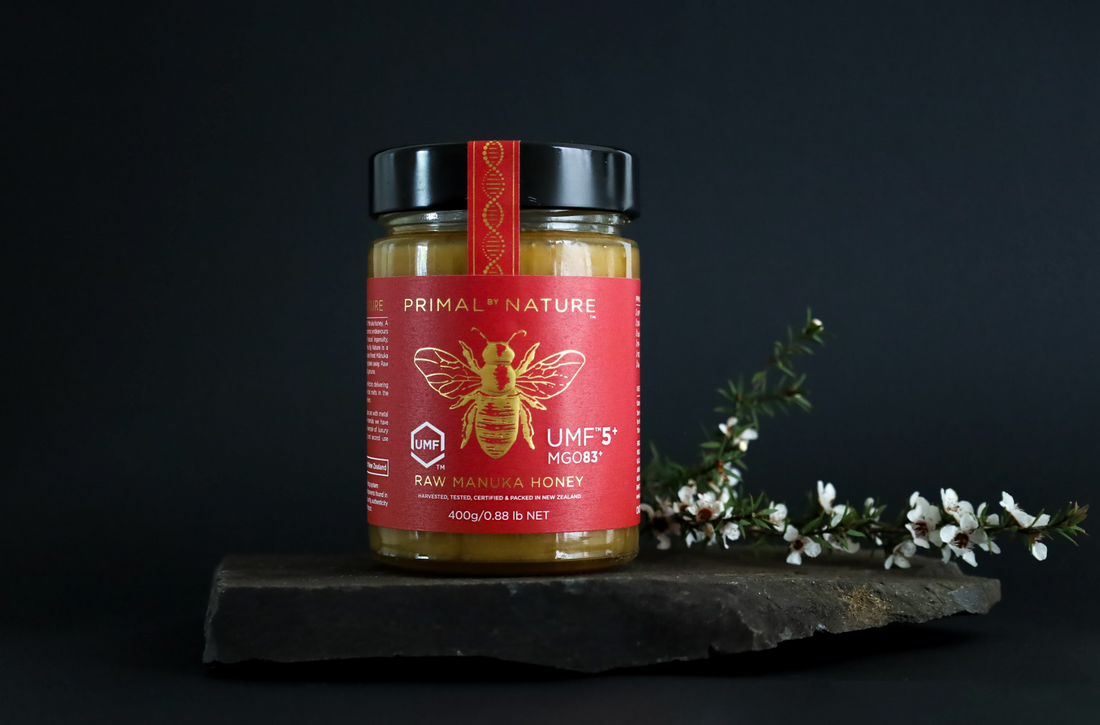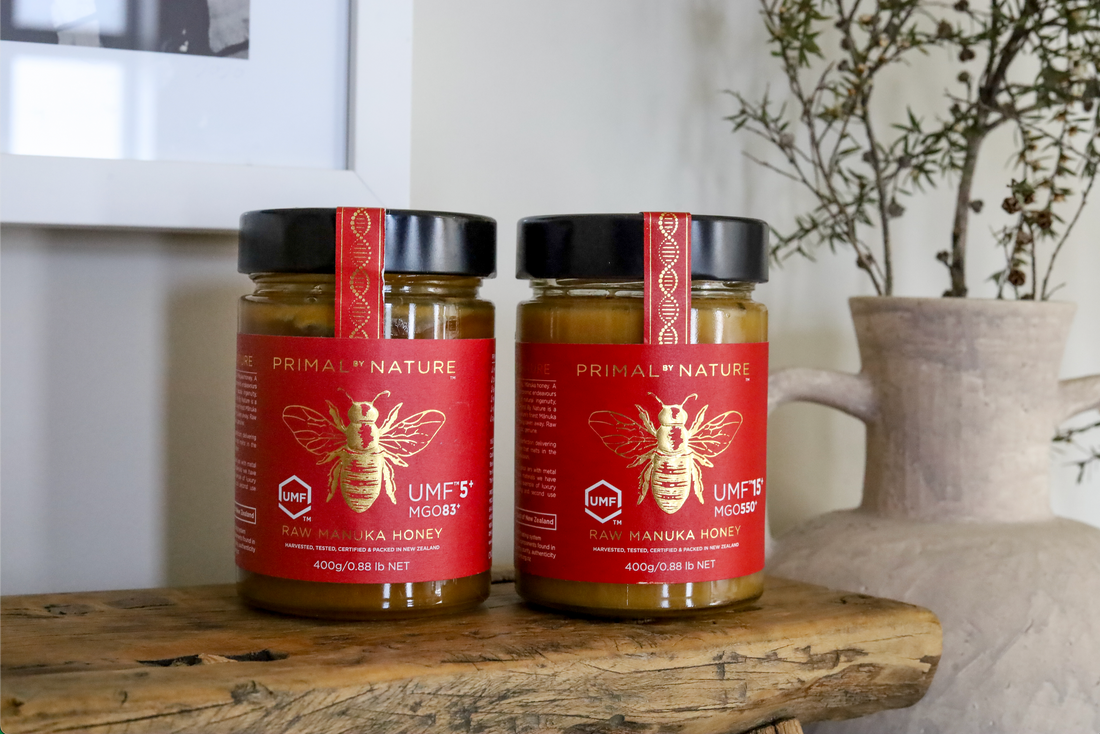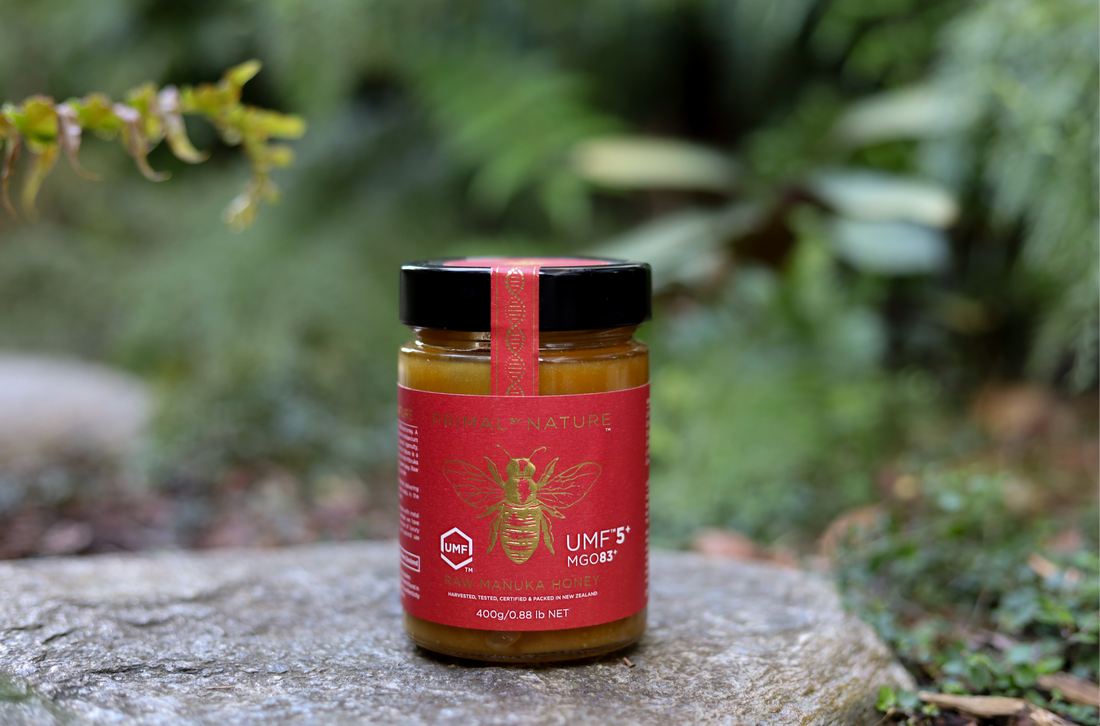As a staple of New Zealand, Mānuka honey has fans that span all corners of the globe. Delivering a unique texture and taste, true fans have come to appreciate the luxurious quality of 100% pure New Zealand Mānuka honey. While the name may be famous to some, the origin and science behind monofloral Mānuka honey are just as fascinating.
Have a read of this informative blog which will outline the key details of where Mānuka honey comes from and how this delicious, raw and primal gift is produced. After reading this article, you’ll be ready to truly appreciate the finer details of New Zealand’s rarest honey.
Is Mānuka Honey Only Available in New Zealand?
The Mānuka tree is not only a cornerstone of great New Zealand exports, but it also holds substantial importance for the Maori people. Largely considered to be taonga (or treasure) by the indigenous population, there are actually very similar species of trees in Australia.
The scientific name for the Mānuka flower is leptospermum scoparium. This plant is present in both Australia and New Zealand, yet they do exist under subtly different names. New Zealand calls the plant Mānuka, and Australia calls it the “tea tree”.
This area is contentious because both countries have multi-million dollar exports relying on this highly sought-after honey. Primal by Nature prides itself, however, on ensuring that all of our Mānuka honey is 100% genuine and verified by several independent laboratories and certifications.
Where and How Does The Mānuka Flower Grow in New Zealand?
Although it seems this plant is widespread because it’s found in both Australia and New Zealand - that isn’t the case. Mānuka is quite prevalent in the North Island - particularly in the far north of Kerikeri, through the central part of the island and all the way down into Wairarapa.
Blooming is a very interesting aspect of the Mānuka plant. The blooming of the Mānuka flower plays into the rarity of this very unique honey as the flowers remain open for only a short period throughout the year.
It has been estimated that Mānuka flowers only bloom for six weeks per year, which makes harvesting the nectar very key phase for Mānuka honey production.
How Do Honeybees Make Monofloral Mānuka Honey in New Zealand?
Honeybees are the absolute bedrock of honey production. The process relies solely on these hardworking little creatures, and Mānuka honey would cease to exist if anything happened to the bees.
Just like any other honey, Mānuka honey is produced with a collection of nectar by honeybees. The nectar is then returned to the hive, where the bees process the nectar into honey. The honey is then stored in the honeycomb cells, awaiting harvesting.
However, there is a crucial step here to ensure that bees make pure Mānuka honey. The bees must ensure that they only extract the nectar from the Mānuka flower. Part of what makes monofloral Mānuka honey unique is that the honey is derived from one unique species (or at least mostly one species).
Expert apiarists or beekeepers conduct a very specific process to ensure the bees are only extracting from the Mānuka flower.
How To Make Sure That Mānuka Honey Production Is Eco-Friendly and Sustainable
Primal by Nature is a Mānuka honey brand that places the importance of bee health at the forefront of our business. Part of our belief in a healthy environment is reflected in our packaging. We are the only Mānuka brand to offer a comprehensive range of Mānuka honey products to come in reusable glass jars.
Read “How To Repurpose Your Mānuka Honey Jar?” for more information on re-using your Mānuka honey jar.
Additionally, Primal by Nature is an arm of Midlands Apiaries. Midlands, as a very conscientious business, understands the importance of an operation that is beneficial for people, bees and the environment.
This is why Midlands prides itself on a company that is regularly invested in such organisations as Future Bees NZ. This organisation seeks to bridge the gap between science and apiculture to ensure that bees can continue to thrive in this everchanging world.
Primal by Nature - Sustainably Providing 100% Pure New Zealand Mānuka Honey
Primal by Nature can deliver Mānuka honey from the rawest and primal regions in some of the most remote New Zealand locations. We are your one-stop shop for a sustainable and natural solution. Our Mānuka honey comes in a range of UMF™ strengths.
All Primal by Nature Mānuka honey arrives at your door in recyclable glass jars regardless of the level of MGO or UMF™. We believe that our pure New Zealand Mānuka honey must be the best and should be available to consumers in the same eco-friendly packaging.
Primal by Nature eliminates the confusion surrounding Mānuka honey UMF™ grading systems and standards. As a result, you will be made aware of the different grades and be confident in buying a product that reflects an environmentally conscious brand.
Taking Mānuka honey to the next level, every Primal by Nature glass jar contains a potent primal burst of nature. To taste Mānuka honey of this stature is to embrace nature itself. So take a look at our extensive selection of Mānuka honey products and become one with nature.





